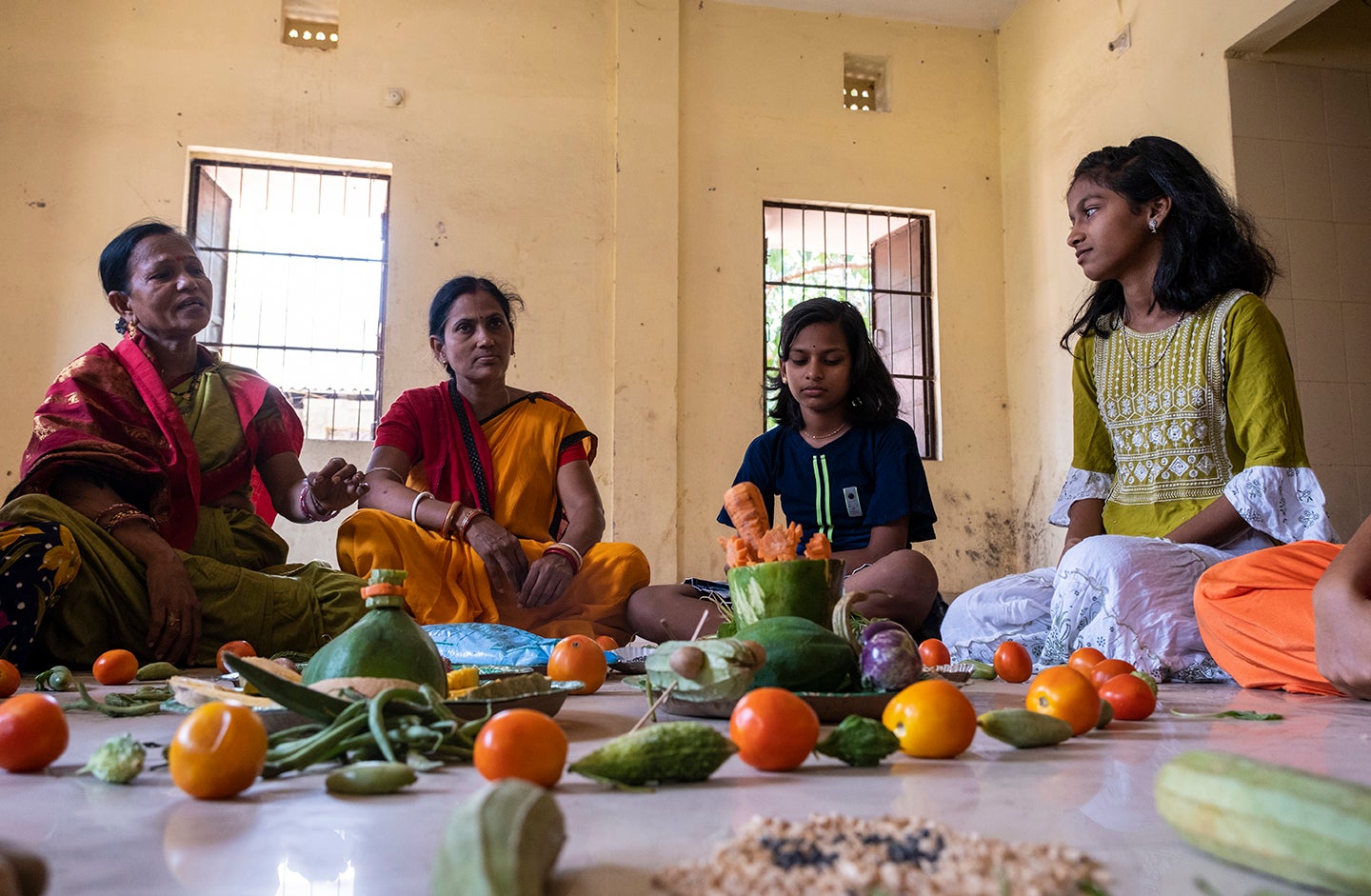Demographic shifts in India
India experienced major demographic changes over the past two decades, and its population grew by almost 400 million people. These shifts are highlighted in the table, which includes key demographic and socioeconomic factors. This study’s conceptual framework describes how these factors at community, household, and individual levels are related to intentional intermediate and proximate factors that ultimately together impact maternal and newborn mortality. Several of these more distal and intermediate contextual factors are expanded upon throughout this section.
Table: Demographic trends in India

World Bank Open Data. Accessed November 2023: https://data.worldbank.org/ ; Office of the Registrar General and Census Commissioner, Government of India. Sample Registration System Statistical Report 2019. New Delhi: Government of India, 2022. Accessed September 10, 2024. https://censusindia.gov.in/nada/index.php/catalog/44375/download/48046/SRS_STAT_2019.pdf ; Credit Suisse. 2021. The Global Wealth Report 2021. https://www.credit-suisse.com/about-us/en/reports-research/global-wealth-report.html
Community and socioeconomic development
Several community development indicators have shown substantial improvement in recent decades, and although these factors are more distal, they are also related to mortality reductions. Between the 1998–1999 NFHS and 2019–2021 NFHS, households with electricity increased from 60% to 97%, households with improved toilets increased from 36% to 69%, and households with telephones grew from 7% to 93%., Progress in key community development indicators has been facilitated by the 2014 Swachh Bharat Abhiyan Program—also known as the Clean India Mission—meant to accelerate access to clean fuel, hygiene infrastructure, and water. Improved road infrastructure has also been highlighted as a key distal driver of progress by enabling the referral progress, as one civil society member noted:
“Roads are very, very important. You can transfer one patient from one place to another very quickly if you have a road.”
These physical development indicators are accompanied by progress in other important aspects of development. For example, between the 2005–2006 NFHS and 2019–2021 NFHS, households with access to bank accounts increased from 40% to 97%., Bank accounts are essential for a household to be able to receive conditional cash transfers, which are key components of maternal and newborn health programming in India.
Nutritional status
India has seen improvements in certain nutritional risk factors for mortality, while others remain high. Between the 2005–2006 NFHS and 2019–2021 NFHS, the proportion of births to women considered underweight—defined as a BMI below 18.5—decreased from 41% to 20%., In contrast, maternal anemia prevalence remained high at 60% during this period.,
India has instituted programs to improve food security and nutrition, such as the 1997 Targeted Public Distribution System, which sought to provide food rations for families living below the poverty line, and later the 2013 National Food Security Act, which aimed to provide a nutritional maternity benefit., Nutritional counseling has also been integrated into Village Health and Nutrition Days when iron and folic acid tablets and vitamin A tablets were distributed beginning in the 2005–2012 Reproductive and Child Health II/National Rural Health Mission (RCH II/NRHM) period. This nutritional education has been associated with higher utilization of additional nutrition services, lower rates of maternal anemia, and improved birthweights for newborns.

Women’s empowerment
Progress in women’s empowerment in India cannot be fully captured by one specific indicator, but together, improved educational attainment, higher age at first marriage, lower fertility rates, and improved autonomy in decision making highlight that progress has been made in India. As one government partner described, women’s empowerment was found to be “the cornerstone of everything” that India had achieved in maternal and neonatal health over recent decades.
Between the 2005–2006 NFHS and 2019–2021 NFHS, women who received secondary education increased from 45% to 66% while the literacy rate improved from 55% to 72%., The 2018 National Education Mission specifically highlights the importance of female education and builds on decades of previous policies that have promoted education.
The median age at first cohabitation after marriage also increased slightly from 17 to 19 between the 2005–2006 NFHS and 2019–2021 NFHS., This trend aligns with decreases in adolescent fertility rate, as highlighted earlier in the section, which notes that the sharpest relative declines in fertility have been among younger women and girls.
Women have also increasingly become decision makers about their own health, with the percentage of women reporting that their husband solely decided on their health care declining by nearly half, from 30% to 16% between the 2005–2006 NFHS and 2019–2021 NFHS., Similarly, the percentage of women who reported that they jointly made health care decisions with their husband increased from 35% to 72% during the same period.,
